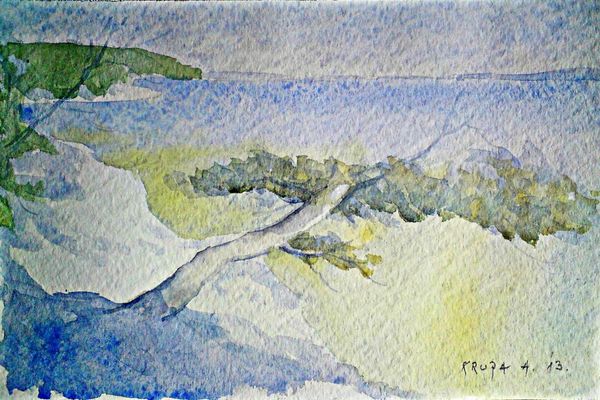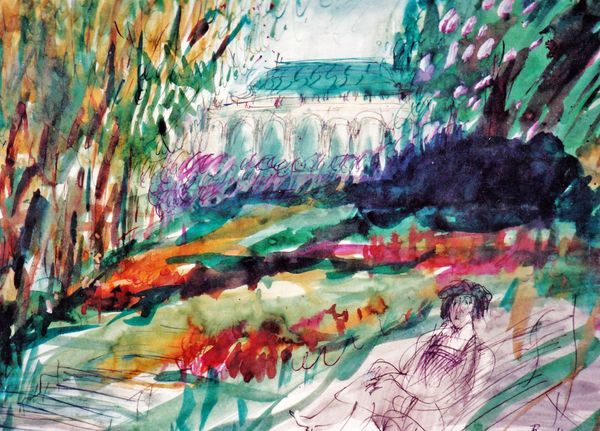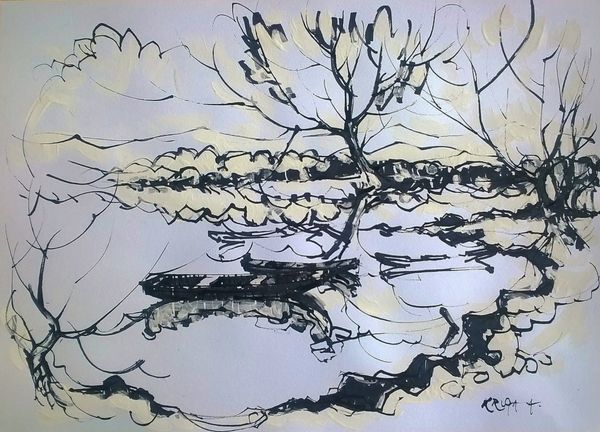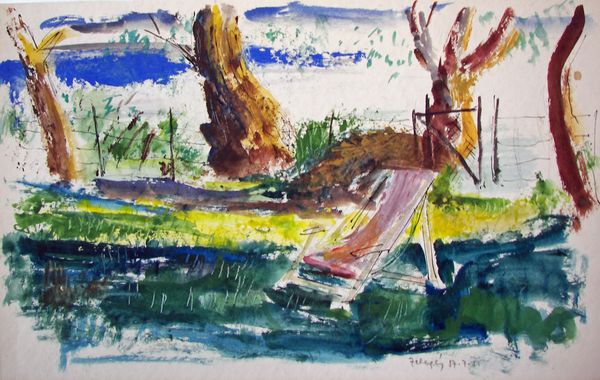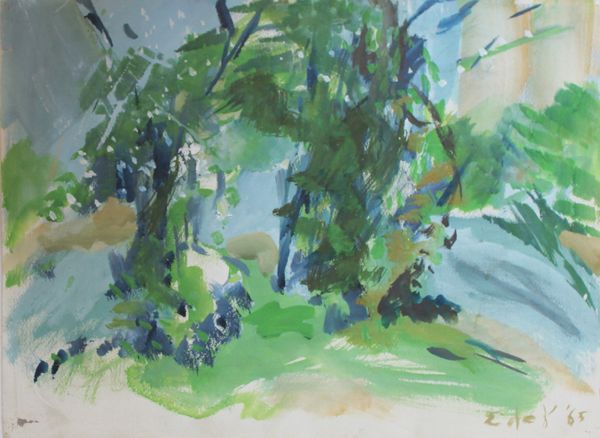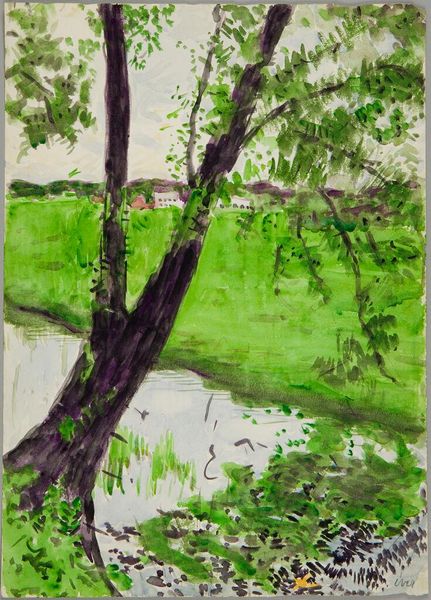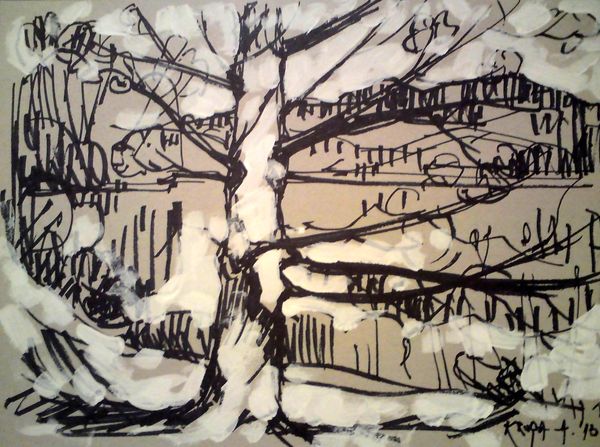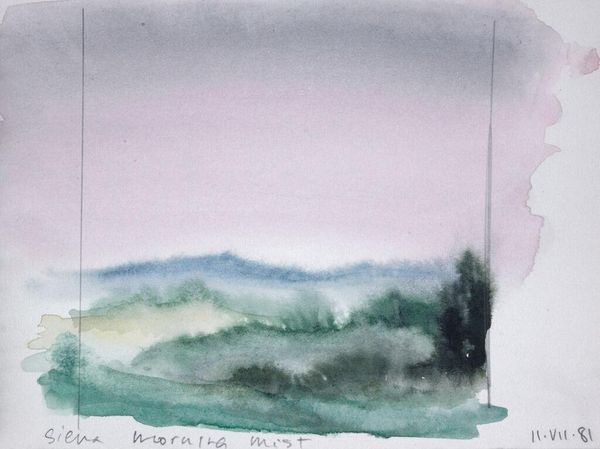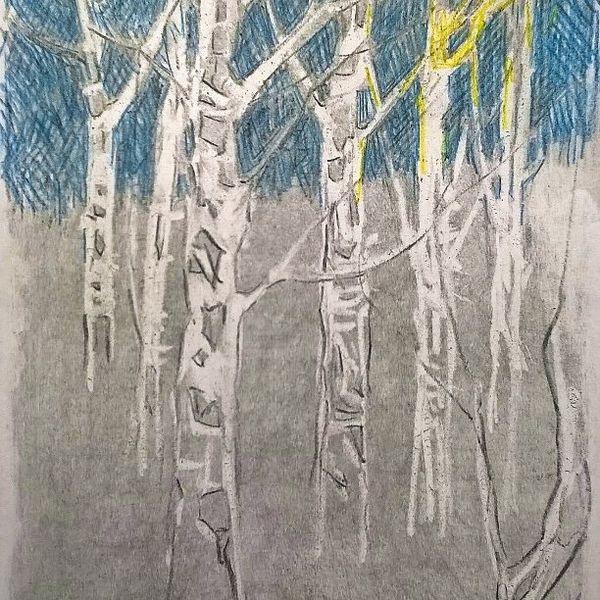
plein-air, watercolor
#
water colours
#
plein-air
#
landscape
#
watercolor
#
line
Dimensions: 30 x 40 cm
Copyright: Creative Commons NonCommercial
Curator: Looking at Alfred Freddy Krupa's watercolor piece from 2013, titled "Bajer Šumbar. Artificial lake (15.06.2013)", my immediate impression is one of tranquility—a stillness captured in the gentle washes of color. Editor: Tranquility, yes, but also something more complex. I see in this piece a commentary on constructed landscapes, particularly in how 'nature' is defined and commodified through the act of artistic representation itself. Curator: Absolutely. The materiality of the watercolor plays a crucial role here, right? Krupa uses thin layers, almost transparent, which echo the artificiality of the lake itself—a man-made entity striving to imitate nature. He creates these delicate branches, almost like a dance across the page. Editor: And considering it's a plein-air piece, done on-site, we should consider Krupa's positioning. Was he implicating himself, acknowledging his role in that tradition? How does the artwork challenge or conform to the historical representation of nature, considering the landscape's own fabricated origin story? What's missing? People? What are its historical omissions? Curator: That’s a great point. This direct engagement with the location also speaks volumes about his artistic process. Doing watercolor on site involves speed, adaptation to the changing conditions—consider how he controls the way the pigment bleeds into the paper itself. The fluidity, that transparency--those choices impact how the observer experiences it as well, right? Editor: Precisely. And the use of watercolor is fascinating too; a medium often associated with amateurism, traditionally coded as feminine or less ‘serious’. Was this Krupa's statement? It invites discussion, even critiques, of nature's authenticity in art. Curator: It opens up some interesting discussions. Ultimately it comes down to our own engagement. Krupa’s art making invites the viewer to slow down and question those relationships, doesn't it? Editor: It absolutely does. It makes you think about our role in shaping not only physical landscapes but our understanding and experience of those spaces.
Comments
No comments
Be the first to comment and join the conversation on the ultimate creative platform.

